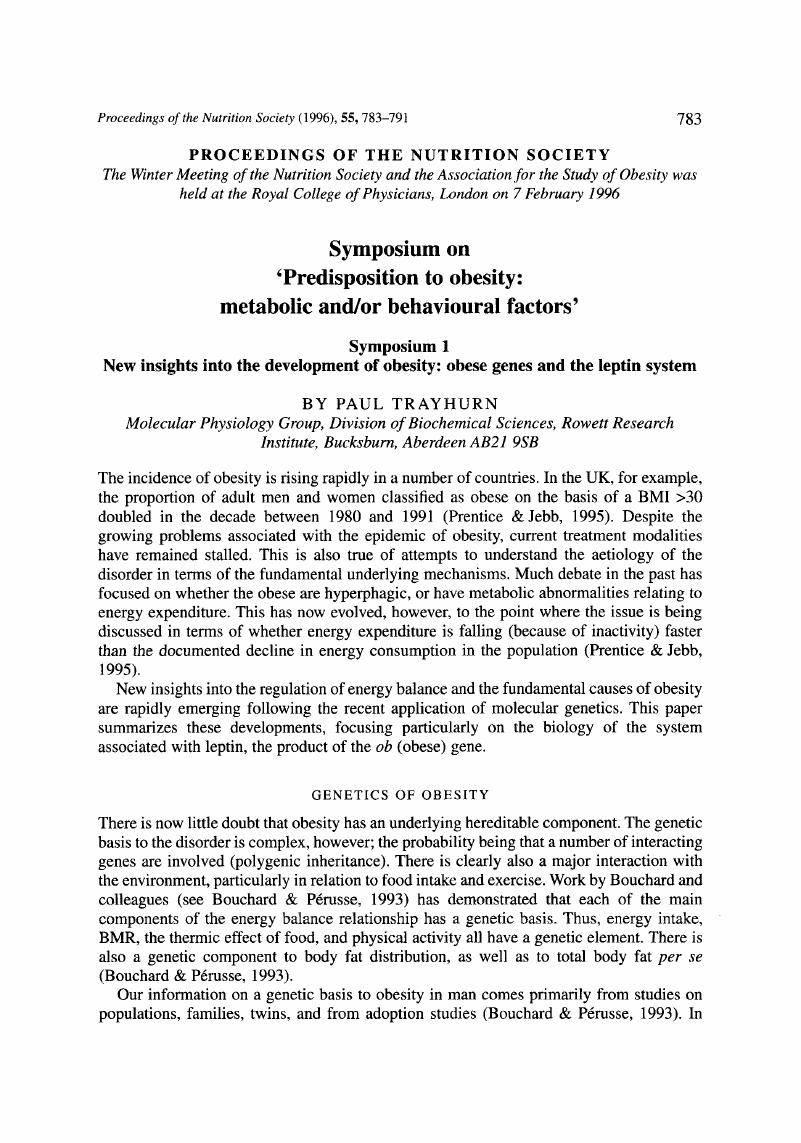Crossref Citations
This article has been cited by the following publications. This list is generated based on data provided by Crossref.
Remesar, X.
Rafecas, I.
Fernández-López, J. A.
and
Alemany, M.
1997.
Leptin: An annotated addendum.
Medicinal Research Reviews,
Vol. 17,
Issue. 5,
p.
499.
Frühbeck, G.
Jebb, S. A.
and
Prentice, A. M.
1998.
Leptin: physiology and pathophysiology.
Clinical Physiology,
Vol. 18,
Issue. 5,
p.
399.
Porter, Richard K.
and
Andrews, J. Fred
1998.
Effects of leptin on mitochondrial ‘proton leak’ and uncoupling proteins: implications for mammalian energy metabolism.
Proceedings of the Nutrition Society,
Vol. 57,
Issue. 3,
p.
455.
Coppack, Simon W.
Pinkney, Jonathan H.
and
Mohamed-Ali, Vidya
1998.
Leptin production in human adipose tissue.
Proceedings of the Nutrition Society,
Vol. 57,
Issue. 3,
p.
461.
Dryden, Simon
Pickavance, Lucy
Henderson, Lynne
and
Williams, Gareth
1998.
Hyperphagia induced by hypoglycemia in rats is independent of leptin and hypothalamic neuropeptide Y (NPY).
Peptides,
Vol. 19,
Issue. 9,
p.
1549.
Martí, A.
Berraondo, B.
and
Martínez, J. A.
1999.
Leptin: Physiological actions.
Journal of Physiology and Biochemistry,
Vol. 55,
Issue. 1,
p.
43.
Kyriazakis, Ilias
2001.
Animal Models — Disorders of Eating Behaviour and Body Composition.
p.
83.
Frühbeck, Gema
2001.
A heliocentric view of leptin.
Proceedings of the Nutrition Society,
Vol. 60,
Issue. 3,
p.
301.
Frühbeck, Gema
Gómez-Ambrosi, Javier
Muruzábal, Francisco José
and
Burrell, María Angela
2001.
The adipocyte: a model for integration of endocrine and metabolic signaling in energy metabolism regulation.
American Journal of Physiology-Endocrinology and Metabolism,
Vol. 280,
Issue. 6,
p.
E827.
Mantha, L
Russell, JC
Brindley, DN
and
Deshaies, Y
2002.
Developmental changes in adipose and muscle lipoprotein lipase activity in the atherosclerosis-prone JCR:LA-corpulent rat.
International Journal of Obesity,
Vol. 26,
Issue. 3,
p.
308.
Frühbeck, Gema
and
Salvador, Javier
2004.
Role of adipocytokines in metabolism and disease.
Nutrition Research,
Vol. 24,
Issue. 10,
p.
803.



